|
In my last blog, I detailed my visit to the Resonaari Music Center in Helsinki where Figurenotes was created. This innovative approach to reading music, originally created for people with special needs, has since helped all beginning music students participate in music-making immediately. After establishing this foundation of music using concrete color shapes, students can transition to reading traditional notation. I was fortunate to take a Figurenotes teacher training at Drake Music Scotland, which is an arts organization with "expertise in inclusive music technology and specialist teaching methods (that) support people of all ages and a wide range of disabilities to play, learn and compose music independently." During this one-day training I experienced firsthand how Figurenotes helped me play a new instrument (the electric bass), compose music inspired by a piece of artwork, and perform music in a band. Below is an example of how Figurenotes attaches color to note names for piano (middle C) and violin (1st position). Shapes represent a particular octave. Drake Music Scotland (DMS) is not only inclusive in its approach, but also in the way it shares resources. There are many resources on their website including how to use Figurenotes to play rhythms, chords, sharps and flats, and progression to traditional notation in three simple stages. They also have video tutorials like the one below, which I plan to use in my classroom next year. It uses movement and Figurenotes as a way for young children to create their own compositions collaboratively. As part of the teacher training, we worked in groups to create a composition based upon an art print. The prints incorporated either Figurenote colors or black and white so that we had the option of coloring those prints with Figurenote colors. Our group chose the one with red, blue, and brown bands of color with splotches of black on top. We decided to "read" the print from left to right (yellow, brown, blue, brown, red) and from foreground to background with the black splotches represented in various ways throughout the piece, including the beginning and end (hint: listen to the maraca). See if you can hear the colors of our composition, which included our Figurenote colors: C, D, F, G, A. DMS also shared with us online resources for purchase: Figurenotes for classical music, folk tunes, Christmas carols, and early years, as well as a yearly subscription to Figurenotes software, which allows teachers to adapt all of their teaching material to include Figurenotes Stages 1 and 2. There is even a Resource Base, which contains a library full of tunes, worksheets, lesson plans, and creative resources.
And finally, DMS is partnering with BBC Ten Pieces: an extraordinary contribution to music education in the UK and classical world. The motivation behind BBC Ten Pieces is to get students excited about classical music. BBC selected ten works from every era and created free resources for teachers to use in their classrooms including film, lesson plans, workshops and other creative resources. They also commissioned a new piece for each one of their Ten Pieces sets: early years, primary, secondary, and special needs. Kerry Andrew, a British composer, was commissioned to write, No Place Like, which celebrates what home means through words submitted by children from across the UK. Most of the BBC Ten Pieces resources are only available to teachers in the UK, but important to mention in hopes that something like this can make its way to the United States. As part of its partnership with BBC, Drake Music Scotland created Figurenotes for several of these BBC pieces. Thank you, Drake Music Scotland, for introducing me to so many incredible teaching approaches, resources and organizations. You truly embody the word inclusion. I know I have only touched the surface of all that you do, but am looking forward to seeing some DMS programs in action in May. I plan to dedicate a future blog to your programs and the inclusive music technology that you use.
2 Comments
As part of my travels to Helsinki as a Fulbright Finland Inter-Country Travel grant recipient, I had the honor of meeting Kaarlo Uusitalo, Director of Resonaari Music Center and creator of Figurenotes. I met him at the programʼs site – a home in a residential neighborhood, which provides unique musical experiences to 350 students ages 8 to 80 years old, many of whom receive additional support needs. I sat down with Kaarlo at his dining room table while music-making could be heard throughout the house. Kaarlo shared the inspiration behind the creation of the Resonaari Music Center, which has received worldwide recognition. In 1995, Kaarlo, a therapist working with individuals receiving additional support needs, found that traditional counseling was not serving many of his clients. He felt that each week he was starting from scratch because his clients were not able to retain what was discussed, understand causal relationships between their actions or easily create structure in what can be an otherwise chaotic world. Fortunately, Kaarlo was able to draw from his experiences playing in a rock band to find a solution: teach them how to play music! He had multiple reasons. Music is a social activity, based upon patterns, has cause and effect relationships, and helps build cognitive and social-emotional skills. What started with only a few pupils in 1995 has grown to 350 students today, ages 8 to 80, who play together in bands, compose music and perform on the stage. Kaarlo has seen how playing music enhances self-esteem, enriches lives and prevents loneliness and marginalization. Kaarlo found that the biggest stumbling block was learning how to read music, which is quite abstract and a challenge for any beginning music student. So Kaarlo created a musical system as concrete as possible using patterns of colors and shapes so that you play what you see. This musical system is called Figurenotes, which allows beginning musicians to participate in music almost immediately. After establishing this foundation of music as concrete patterns, students can transition to reading traditional notes. On site, Resonaari teachers can transform traditional notation into Figurenotes so that they can provide music that students request. Figurenotes is used in Italy, Estonia, Japan, Ireland, Latvia, United States and the United Kingdom. In fact, I attended a Figurenotes training at Drake Music Scotland, which Iʼll share in another blog posting. Here is a video introducing Figurenotes. Traveling from one room to the next, whether a band or individual lesson, I observed students with self- confidence, sense of purpose and strong sense of identity. In particular, I will always remember meeting one member of the girls rock band, ResoRock Girls. She was running a piece on her bright red electric guitar as part of a one-on-one lesson and in a subsequent session working diligently on lyrics to an original composition with her band. Kaarlo also shared the story of the rock band, Riskiryhmä: One day after a Resonaari band performance, several women in their 70ʼs approached him and asked if they could learn how to play in a rock band, thus fulfilling a dream theyʼve shared since they were young. Not only did these ladies learn how to play at Resonaari using Figurenotes, they continue to perform regularly now in their 80ʼs. Talk about a sense of well-being! Watch them perform at a Resonaari concert in May 2018. Kiitos, Kaarlo and Director Markku Kaikkonen for welcoming me into your inspiring Resonaari Music Center! I appreciate you taking so much of your time to share the history of Resonaari, as well as the inspiring work of musicians and bands honing their craft in practices rooms throughout this two-story home. I look forward to watching the upcoming Resonaari concert online this May 13th and 14th. You can watch last yearʼs concert on Youtube!
Finland has been a longstanding leader in education. This past week, as a Fulbright Finland Inter-Country Travel recipient, I gained a better understanding why. The Fulbright Finland travel grant for US Fulbrighters in Europe is unique among many of the European Fulbright participating countries. What makes it so distinctive is that school teachers also are eligible to apply, not only professors. Terhi Mölsä, Chief Executive Officer of Fulbright Finland Foundation, shared the reasoning behind their decision: they value having teacher voice, viewpoint and expertise at the table when discussing solutions to todayʼs global challenges. This reason speaks to the cross-disciplinary, holistic and innovative spirit of the Finnish education community. The Foundation hopes that other Fulbright countries will join them by including school teachers as eligible participants in their travel grants so that Fulbright Finland teachers also can have the same opportunity.
During my five days in Helsinki, I had the opportunity to attend a Future Songwriting training by INTO School, visit the Resonaari music program and interview its founder, meet the Fulbright Finland Foundation staff and fellow Distinguished Award in Teaching recipient, Argine Safari, present to the INTO School team and several staff members of Lycée Franco-Finlandais d'Helsinki and experience a Finnish sauna!
The Creative Europe program of the European Commission selected Future Songwriting in
July 2018 as the only major collaborative project under Finnish management. Future Songwriting is based on the INTO SCHOOL concept, developed in Finland called Ihan Oma Juttu. The main goal of the project is to make composing an integral part of music education, inspire teachers and pupils to take a creative approach to music and create their own compositions. The Finnish expression “Ihan Oma Juttu”,meaning ‘my own thing’, refers to the joy that children can experience when creating their own music. The Future Songwriting project will provide training using Garageband for teachers in 15 schools in three Finland, Germany, and France. This hands-on training will take students through the process of creating, recording, mixing, performing, and publishing. I was honored to attend the training as a member of the Musical Futuresʼ team and present the Musical Futures approach to teaching and learning in the school classroom. Both Musical Futures and INTO School were recognized for their innovative contribution to the field of education by the global nonprofit HundrEd.
During the first day of training, the INTO team had us select an item from a bag of found objects. I pulled out a plastic necklace, while others the lid to a pot, a spoon, a book, stapler, etc.). We then recorded the sound of our object any way we liked and created a Found Sound Orchestra by holding our iPads in a semi-circle and having volunteers conduct us – gesturing certain sounds to be played or gradually asking us to play louder or softer using our volume keys.
Then the INTO team guided us through all of the Garageband Smart instruments including keyboard, guitar, drums, electric bass and strings. Again we played as an orchestra by limiting our chord menu to C, G, Am and F and moving from one chord to the other every 8 beats. The next day, we looked at plug-ins and song structure before creating our own 32-bar compositions using this form: Intro, Verse, Chorus, Verse, Chorus, Bridge, Chorus, Chorus. The final day we observed a multi-age class of 20 students between the ages of 11 and 14 work together in teams to work through the same process. As always, the kids were much more adept at using the tools and jumped right into the creative and collaborative process.
The INTO Team believes that “the project has a positive effect on the well-being of young people and that it prevents social marginalization. Marginalization of children and young people is one of the most significant social problems in Finland. When a young person is marginalized and falls into social deprivation, it will cost society roughly one million euros before he or she turns 60 years old.” I appreciate that the Finns approach education with holistic and long-term goals.
This belief in the power of music for well-being, creativity and student identity/agency is also shared by Kaarlo Uusitalo, the creator of the Resonaari Music Center. I had the honor of meeting Kaarlo at the Resonaari site – a home in a residential neighborhood, which provides unique musical experiences to 325 students ages 8 to 80 years old, many of whom receive additional support needs. I sat down with Kaarlo at his dining room table while music-making could be heard throughout the house. His interview and tour of the program deserves a separate blog post.
While at the Lycée Franco-Finlandais d'Helsinki, the music teacher showed me the kantele, a traditional Finnish plucked stringed instrument from the zither family. Here is Merja Soria singing an ancient Finnish lullaby, Nuku Nuku, accompanied on the kantele.
I also had dinner with fellow Fulbrighter, Argine Safari, who had been observing a music class using a phenomenon-based learning approach. It was wonderful catching up and exchanging ideas. And lastly, I enjoyed a sauna at Allas Sea Pool with members of the INTO school research team. While at my Fulbright Finland luncheon, Terhi shared that the Presidential Palace is directly across from the Allas sauna, which speaks to the egalitarian nature of the Finnish culture. “Where else can you take a sauna and see the President’s Palace while youʼre cooling off in the outdoor seapool? ” I agree!
Kiitos, Fulbright Finland Foundation and the INTO Team, for making my trip to Helsinki such a memorable and educational one. You live in a beautiful city! The time spent at the Fulbright Finland Foundation office talking about educational issues is testimony to how supportive, involved and interested the entire Fulbright Finland team is in forming lasting international relationships with its grant recipients. I look forward to connecting with the Friends of Fulbright Finland in Alaska now that I’m officially an alum!
This week I had the privilege of shadowing Fran Hannan, Managing Director of Musical Futures (MF), as she delivered training in MF Just Play: Music-Making for the Whole Class approach for teachers, including modeling it with a class of 11 year-olds from Leeds. Musical Futures is celebrating its fifteenth year since the launch of the Paul Hamlyn Foundationʼs special initiative. One message that I heard often from Fran is how Musical Futures democratizes music education by making music accessible to all children at whatever their previous level or experience. Musical Futures is founded on this principle and provides a model of self-directed learning that enhances student motivation, enjoyment and skill-acquisition in music lessons by tapping into real-life learning practices of popular musicians. And what I witnessed during the training involving the class of 11-year-olds was just that: engagement and enjoyment by all students start to finish and choice built into each activity. Musical Futures provides tools that allow students to start playing an instrument as a whole class ensemble right away, while differentiating for the wide range of musical skills that children bring with them to school. For example, the major and minor chord card placed on an electronic keyboard (above photo) allow students to play in any key with the root designated in red and the 3rd and 5th notes in blue. Kids naturally self-selected the level of complexity based upon their ability and comfort level. Some played one note, while others played two, all three or both hands. Some chose only to play one chord, while others played all three chords. Some played chords on beat one, others played on all four beats, while others chose to play a more complicated rhythmic pattern. I observed students increase the level of musical challenge throughout the lesson, but it was always student-directed, not teacher led. Fran shared this same type of differentiation and student choice for playing a drum kit by demonstrating the Musical Futuresʼ approach to chair drumming, a popular resource that can be found on the Musical Futuresʼ website. She also suggested to the teacher some creative solutions to soften the potentially loud sounds from wooden or plastic chairs: Jigsaw puzzle floor mats for the snare and slit foam tubing for the high hat. And if you donʼt have a class set of drumsticks, use chopsticks! 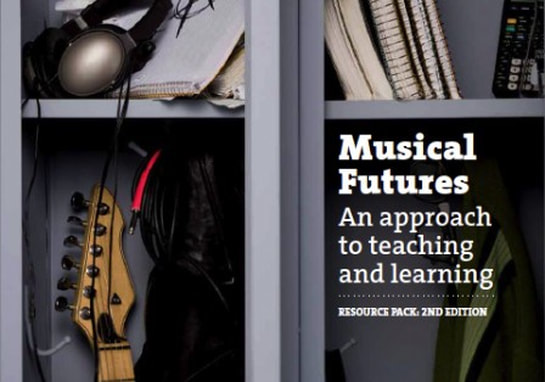 Musical Futures brings the informal approach of out-of-school learning into the in-school setting. Instead of a formal setting which focuses on the individual, has a linear approach and is teacher-led, an informal approach is social, experiential, networked and non-linear. Download a free copy of the Musical Futures Resource pack and follow them on Facebook and Twitter. Every resource that Musical Futures offers on its website is done with the practicalities of school classrooms in mind. Fran is passionate about making music accessible not only to students, but classroom teachers. Hear testimony from music teacher, classroom and support teachers and student reflecting on this day of Musical Futuresʼ whole class music-making. For more information on all of the trainings and resources that Musical Futures offers, please see their website. Here is a video a created highlighting the Just Play training in Leeds to try to capture the enthusiasm and engagement by all involved. Thank you, Fran Hannan and Musical Futures, for your inspiring work in music education! When I was young I lost the confidence to improvise and create my own music. Now, years later and a classically-trained musician I donʼt want my student to have the same experience that I had. I came to realize that I needed more training in how to effectively integrate non-formal and informal practices into the structure of an American public school and a Sistema-inspired music room. This is the main reason why I am conducting my Fulbright in the UK: to study the innovative learning approach of Musical Futures. Inspired by UCL Professor Lucy Greenʼs (2005) informal approach to learning in the music classroom, Musical Futures was established in 2003 as an initiative funded by the Paul Hamlyn Foundation to help address the lack of engagement exhibited by many UK youth in secondary school music programs. Greenʼs informal learning pedagogy provides classically trained instrumental and classroom music teachers with practical tools to successfully integrate informal practices of popular musicians into their teaching. According to Green (2013), "Informal approaches tend to involve a particularly deep integration of listening, performing, improvising, and composing throughout the learning process" (p. viii). Musical Futures was founded on Greenʼs model, which encourages student-driven learning, collaboration, and group performance. Through self-teaching and providing a relevant social context, Musical Futures helps students develop their musical identity and gives them an equal voice in the classroom (Wright, 2014). Programming includes creative music-making through instrumental ensembles, singing supported by mobile technology and whole classroom approaches to teaching drums, keyboard, ukulele, guitar and bass to "keep music alive in our schools in order to nurture the creative talent of tomorrow" (Musical Futures, 2017, para. 3). In 2017, Musical Futures was selected as one of the top ten innovative education projects by the global education non-profit HundrED. My next blog will focus on the Just Play curriculum and training, which Fran Hannan modeled for classroom teachers and primary students in Leeds, but I wanted to end this post with a short video of Lucy Green explaining the informal learning process and what students and teachers can learn from popular musicians. References
Green, L. (2013). Hear, listen, play!: How to free your studentsʼ aural, improvisation, and performance skills. Oxford: University Press. Green, L. (2005). The music curriculum as lived experience: Children's “natural” music-learning processes. Music Educators Journal, 91(4), 27-32. Wright, R. (2014). The fourth sociology and music education: Towards a sociology of integration. Sociology. |
Lorrie HeagyThis is a personal blog, sharing my experiences living in the UK from January - June 2019 as a Fulbright Distinguished Award in Teaching scholar. This blog is not an official site of the Fulbright Program or the U.S. Department of State. The views expressed on this site are entirely my own and do not represent the views of the Fulbright Program, the U.S. Department of State, or any of its partner organizations. Archives
July 2019
Categories
|
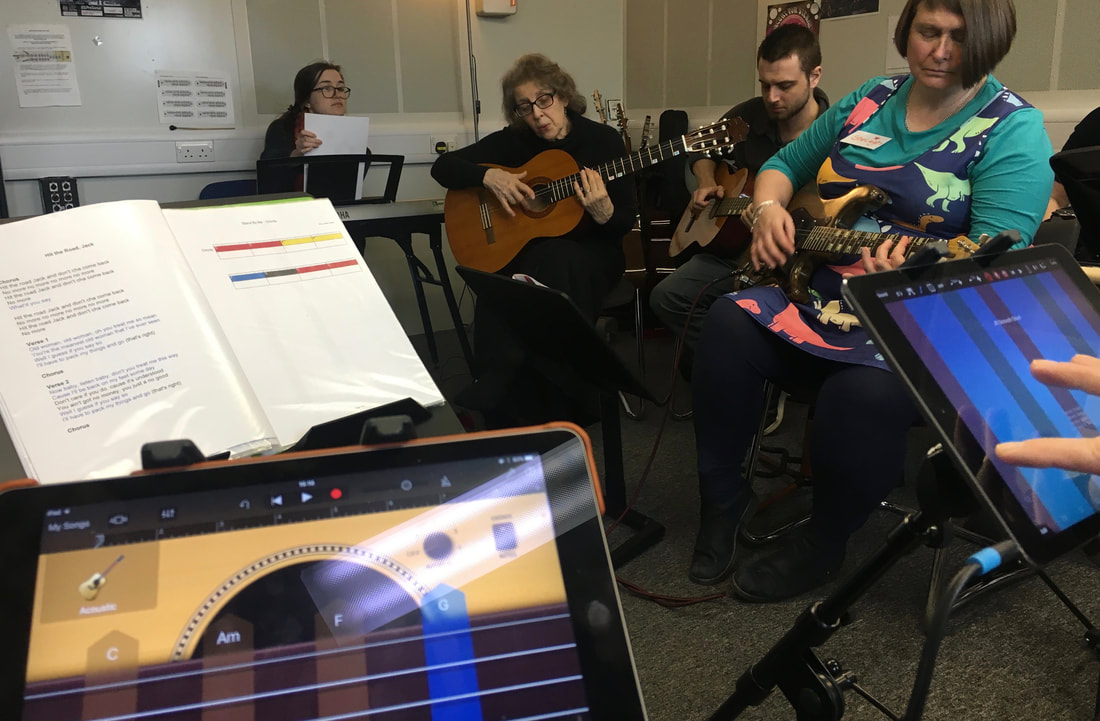
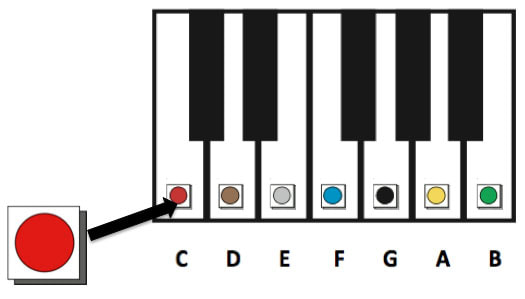
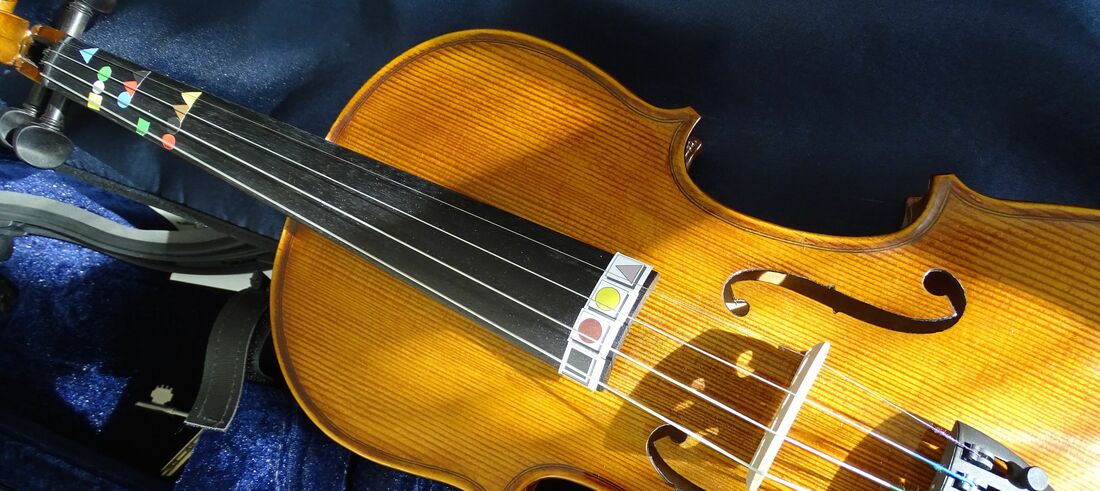
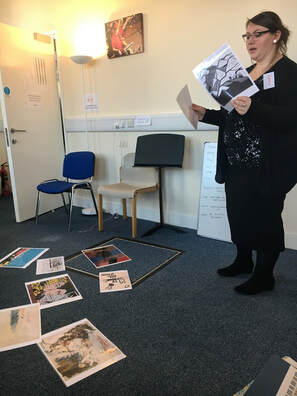
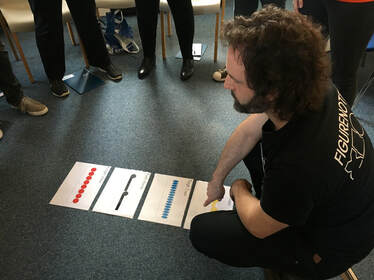
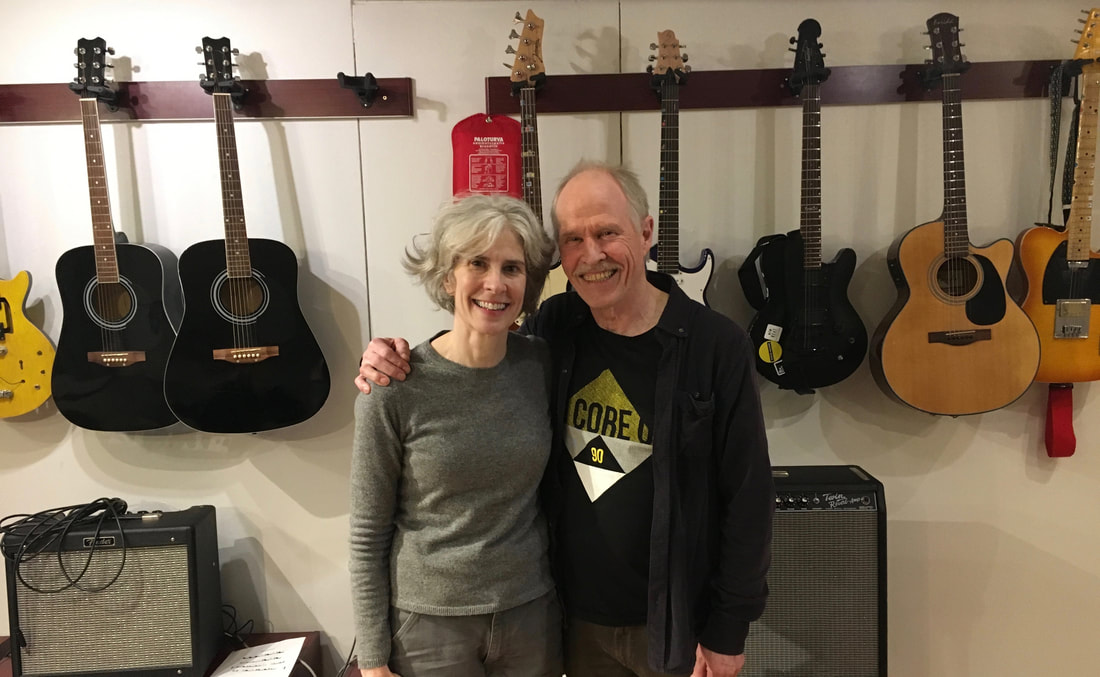
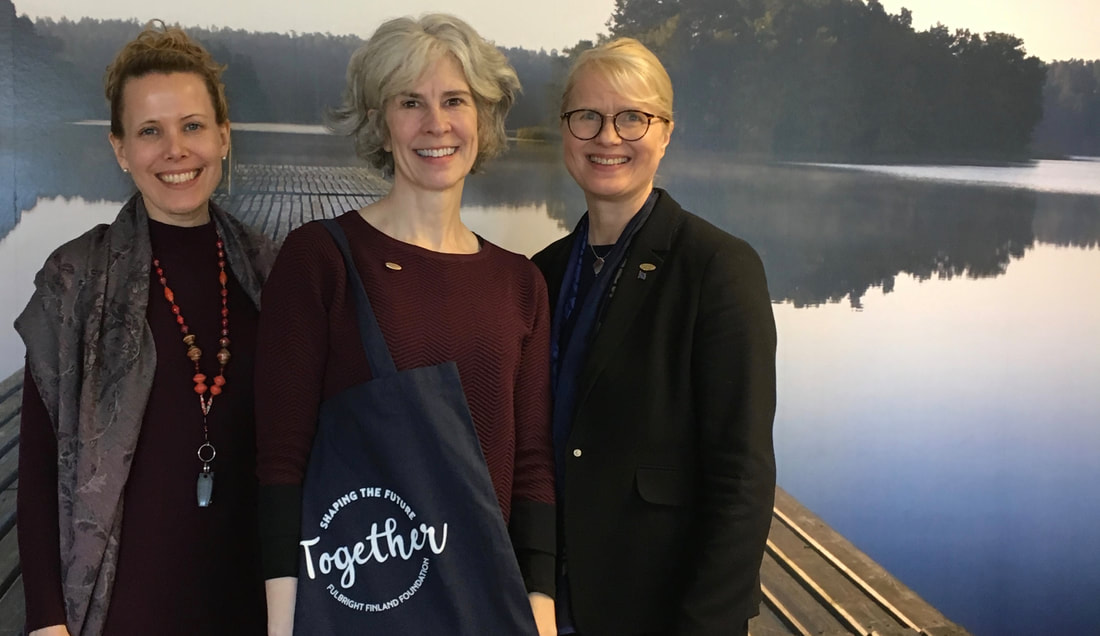
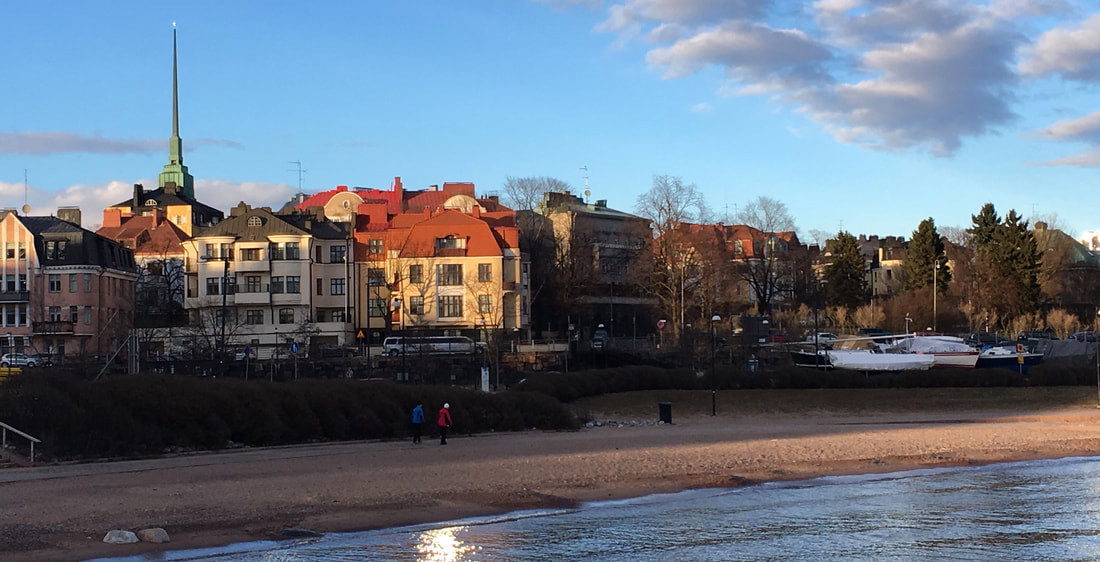
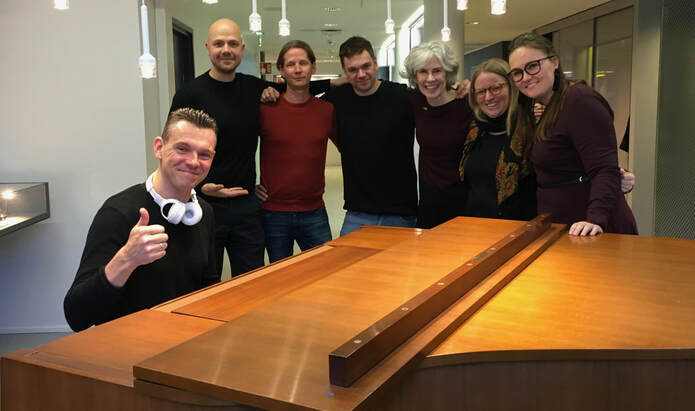
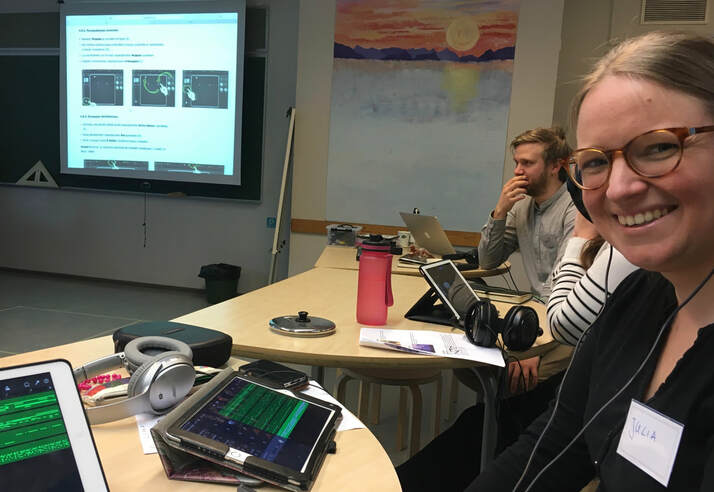
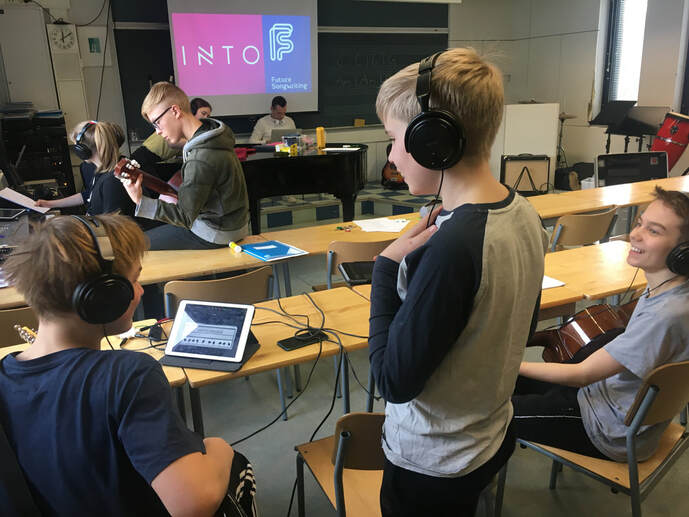
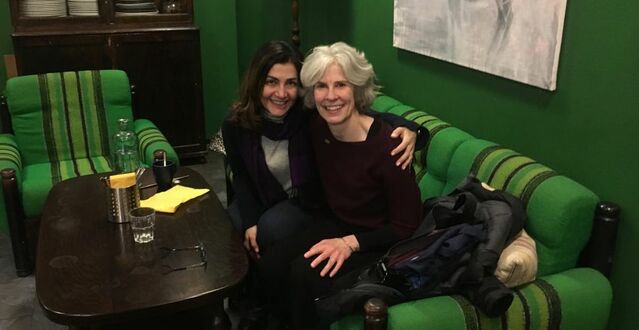
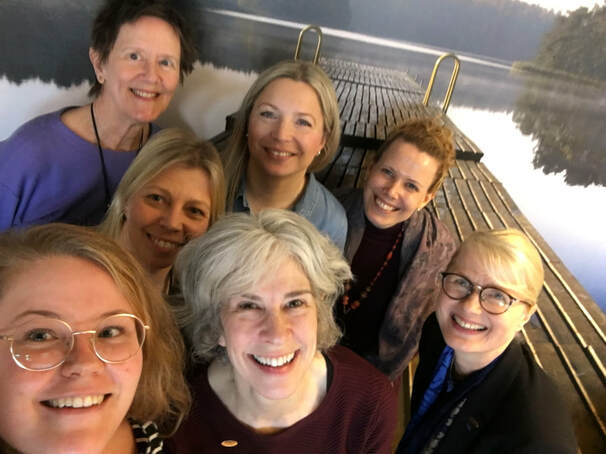
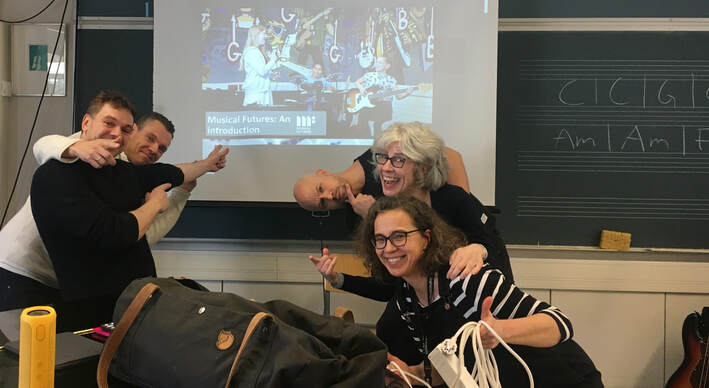
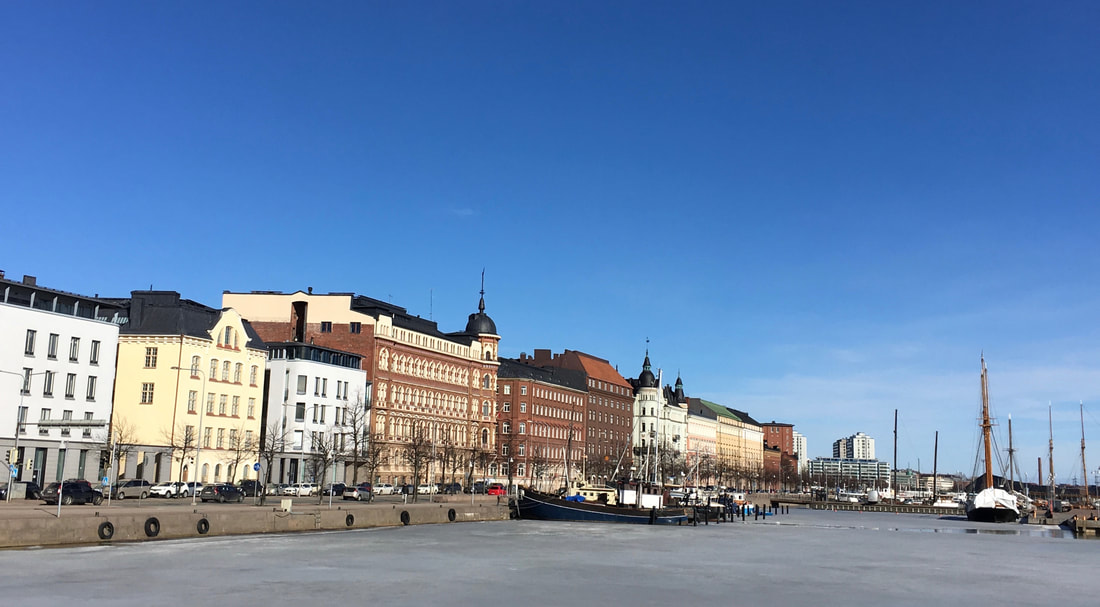
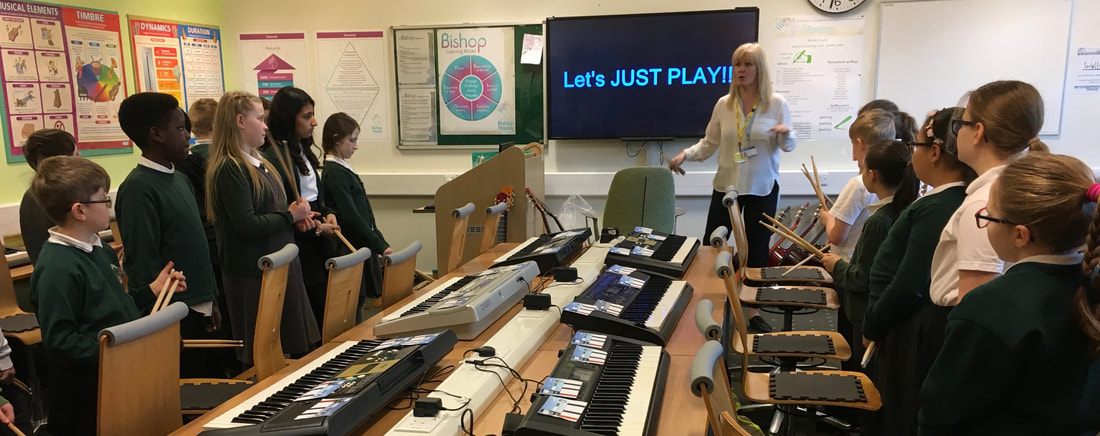
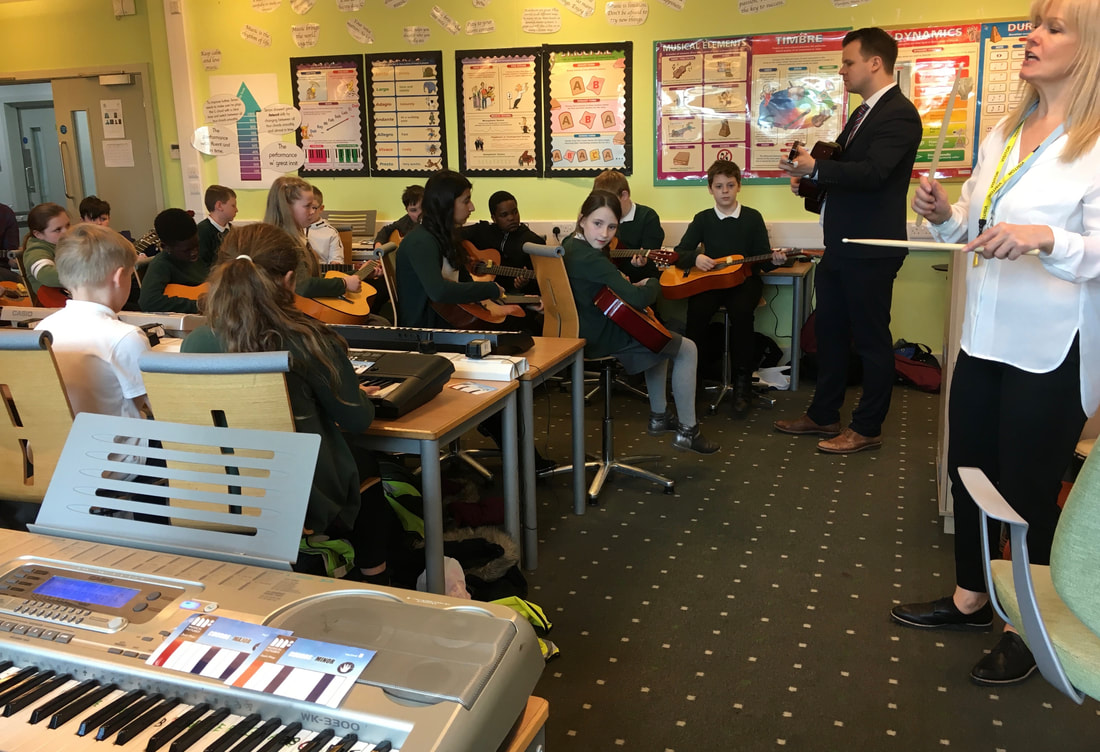
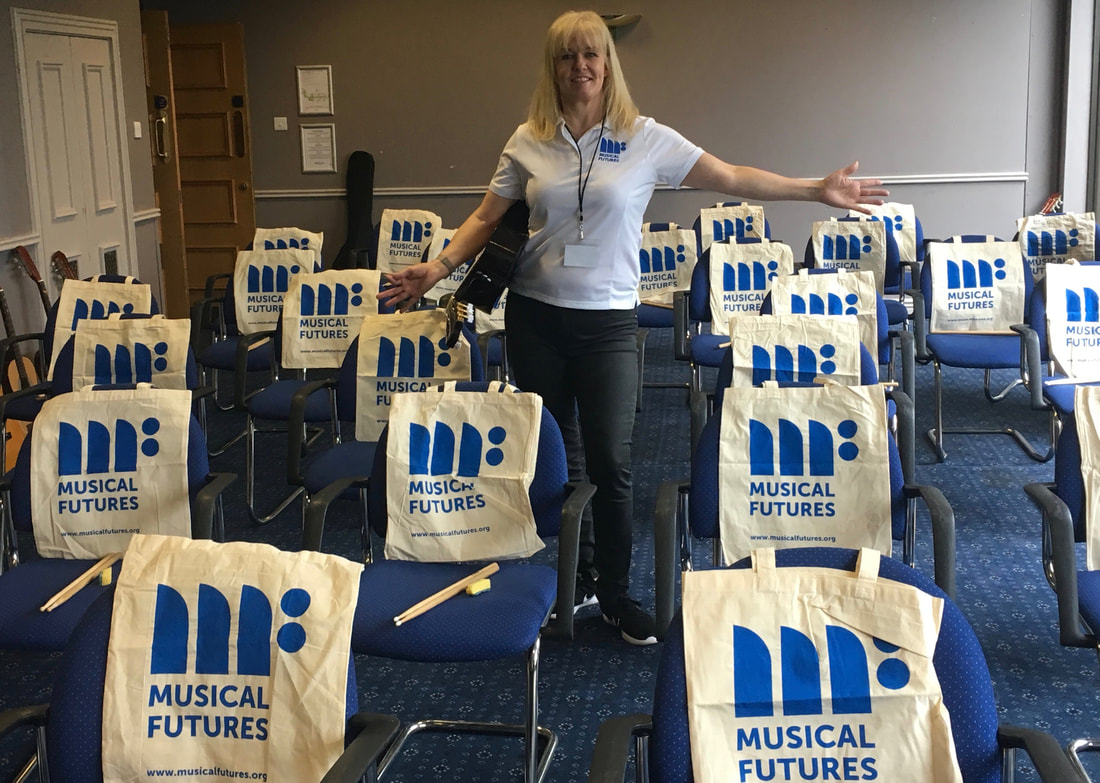
 RSS Feed
RSS Feed
